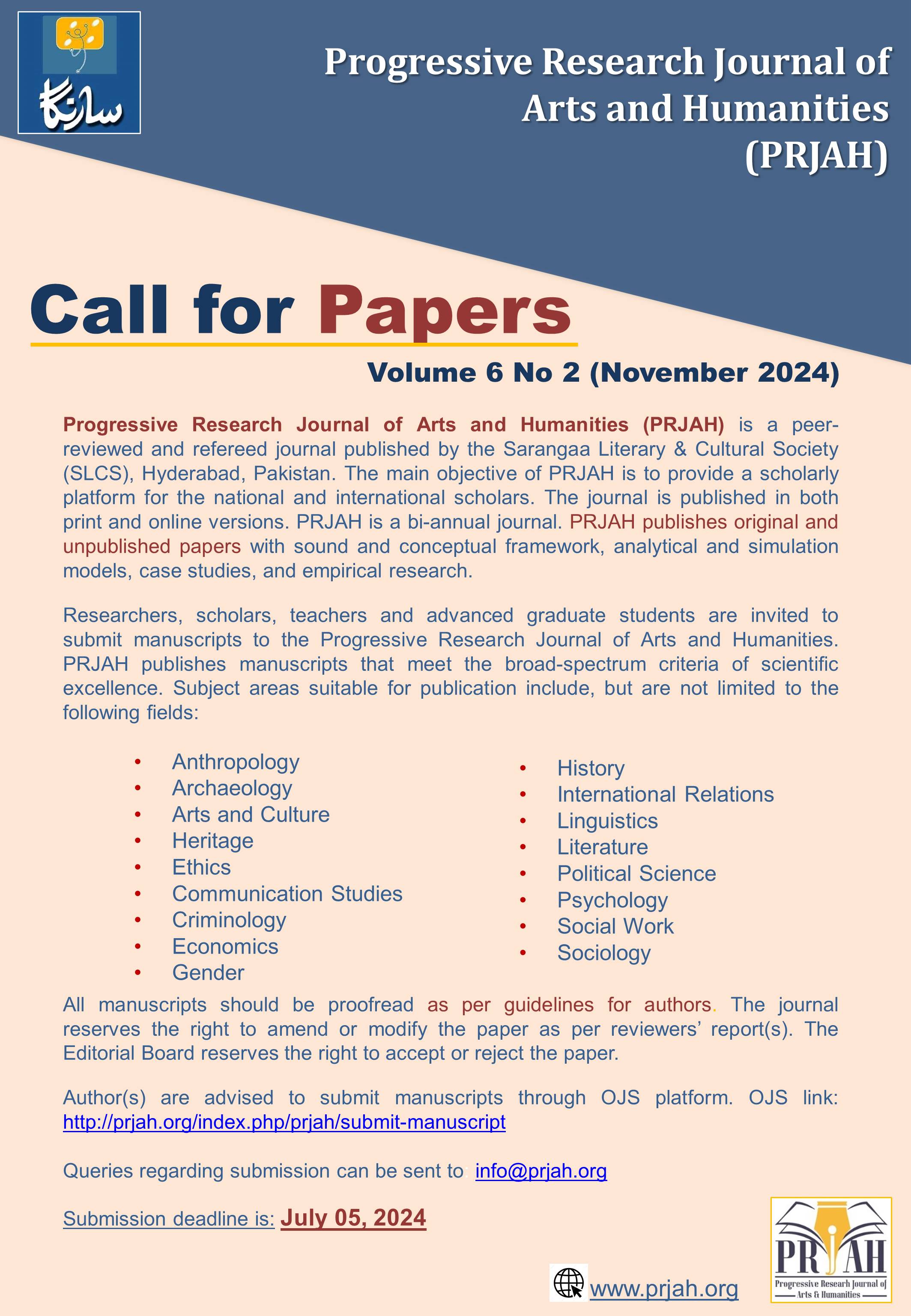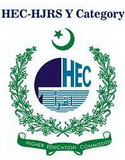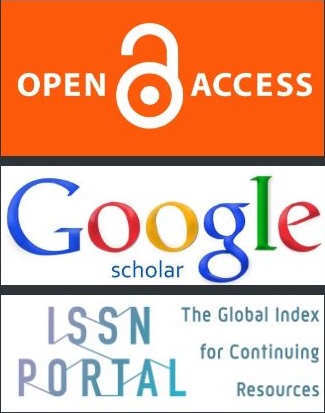Composite Nationalism and Two Nation Theory
Jamiat Ulema-E-Hind and Jamiat Ulema-E-Islam
DOI:
https://doi.org/10.51872/prjah.vol6.Iss2.350Keywords:
Composite Nationalism, Two-Nation Theory, Jamiat Ulema-e-Hind, Jamiat Ulema-e-Islam, Indian National Congress, All-India Muslim LeagueAbstract
The partition of the Indian subcontinent is the most important incident in the modern South-Asian history. The people had lived together for centuries, despite having different religions, ethnicities, and cultures, but now they were divided, with religion being the cornerstone of this division. All of the major religious identities of the subcontinent, such as Hindus, Muslims, and Sikhs, utilized religion politically. This study deals with the Muslims’ politics, specifically, the Deobandi politics. The Deobandis were divided regarding the partition of the subcontinent after the British. One group, including Maulana Husain Ahmad Madani and Jamiat Ulema-e-Hind (JUH), was against the partition and opposed the Two-Nation Theory of the All-India Muslim League, Iqbal, and Jinnah, and supported the theory of Composite Nationalism of the Indian National Congress. The other group included Maulana Ashraf Ali Thanwi and Maulana Shabbir Ahmad Usmani, while the Jamiat Ulema-e-Islam (JUI) supported the Two-Nation Theory. The focus of this paper is both JUH and JUI, or Composite Nationalism and Two-Nation Theory. To explore exactly what their points of view were and on which religious, political, and practical grounds, JUH was opposing the idea of the separation of the Muslims and the creation of an Islamic state, and JUI was supporting it?
References
Bajauri, M. I. (2020). Dar-ul-Uloom Deoband aur Siyasat. Maktabah Umar Farooq.
Daryabadi, A. M. (1952). Hakeem-ul-Ummat: Naqoosh wa Tasuraat. Maktaba Madniya.
Dhulipala, V. (2015). Creating a new Medina. Cambridge University Press.
Iqbal, M. (1938). Armaghan-e-Hijaz. n.p.
Islam, S. (2015). Muslims against partition. Pharos Media & Publishing.
Khan, H. B. (1993). Ulema ka Siyasi Kirdar. Al-Hamd Academy.
Khan, M. A. R. (1992). Tameer-e-Pakistan aor Ulema-e-Rabbani. Idara-e-Islamiyat.
Khan, Y. (2017). The great partition: The making of India and Pakistan. Yale University Press.
Madani, H. A. (1975). Muttahida Qaumiyat aur Islam (2nd ed.). Maktabah Mahmoodiya.
Manglori, S. T. A. (1938). Musalmano ka Roshan Mustaqbil. Nizami Press Bidayoun.
Metcalf, B. D. (2017). Maulana Husain Ahmad Madani and the Jami‘at ‘Ulema-e-Hind. In Muslims against the Muslim League. Cambridge University Press.
Mian, S. M. (2004). Jamiat-ul-Ulema kia ha? Muhammad Riaz Durani.
Qasmi, A. U., & Robb, M. E. (Eds.). (2017). Muslims against the Muslim League. Cambridge University Press.
Qasmi, M. (2016). Dar-ul-Uloom Deoband ki Jamey wa Mukhtasar Tareekh. Sheikh-ul-Hind Academy.
Shafi, M. (1946). Ifadaat-e-Ashrafia dar Masael-e-Siyasia. Dar-ul-Ishaat Deoband.
Shafi, M. (2010). Jawahir-ul-Fiqh (Vol. 5). Maktaba Dar-ul-Uloom Karachi.
Sheikh, M. A. B. (2011). Qaumi Siyasat aor Jamiat Ulema-e-Islam. Al-Jamiat Media Foundation.
Sherkoti, M. A. (2020). Hayat-e-Imdad. Maktaba Dar-ul-Uloom Karachi.
Usmani, M. U. (2018). Tahreek-e-Pakistan ma Ulema-e-Kiram ka Kirdar. Sheikh-ul-Hind Media Foundation.
Zakaria, R. (2001). The man who divided India: An insight into Jinnah's leadership and its aftermath. Popular Prakashan.
Downloads
Published
How to Cite
Issue
Section
License
Copyright (c) 2025 Progressive Research Journal of Arts & Humanities (PRJAH)

This work is licensed under a Creative Commons Attribution 4.0 International License.







